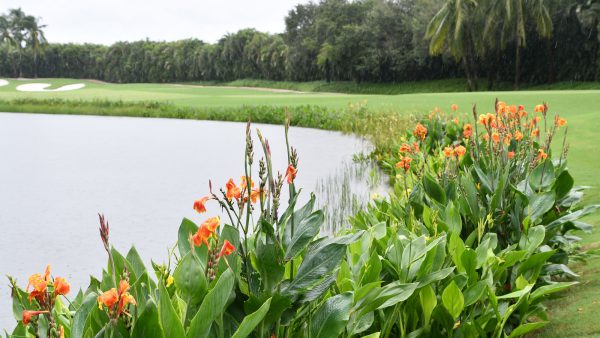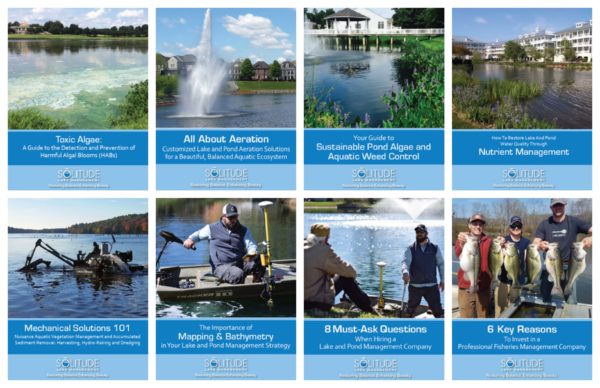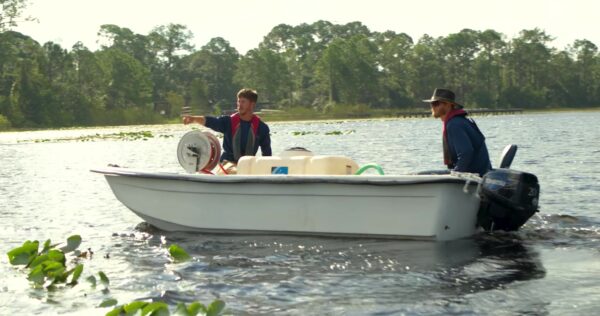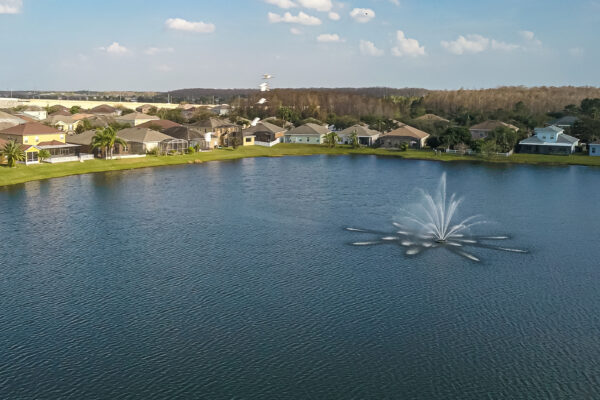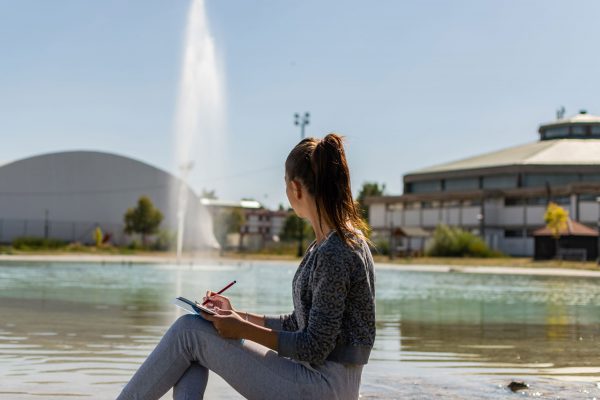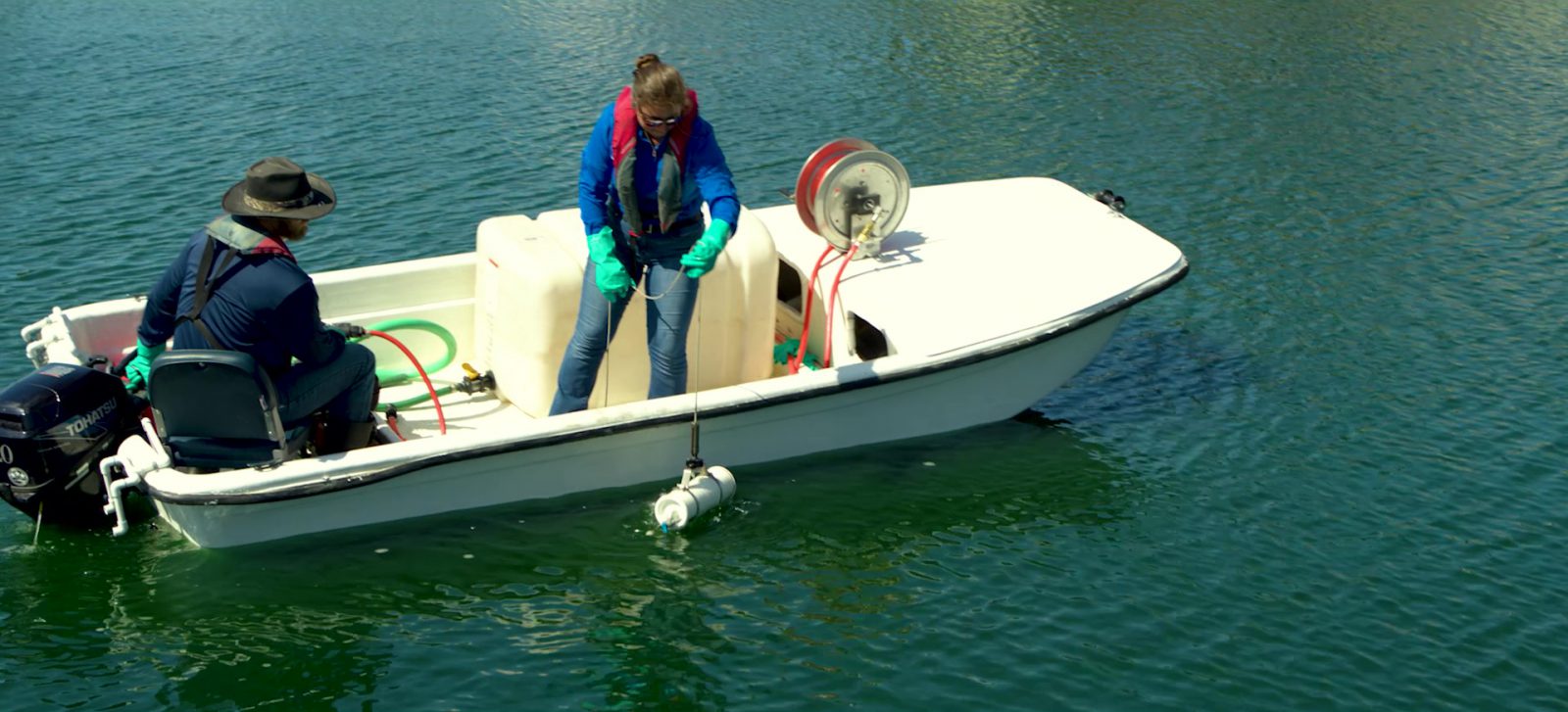
As many lake and pond owners know, fertilizing is an effective fisheries management method to increase the biomass of fish a waterbody can naturally support and strengthen the food web. Through the application of additional nutrients to the water, fishing ponds can accommodate more than three or four times the amount of fish than ponds lacking suitable nutrients, leading to a larger population of game fish. But with the various fertilization strategies and nutrient-supplying products available to property owners, how can you know which program is most effective and environmentally responsible?
Threats to Productive Fisheries
While green is a much avoided color in lakes and ponds used for recreation and aesthetic beauty, it is a desirable color for fisheries because it indicates the water is well-fertilized and rich in the nutrients necessary to sustain trophy fish. However, many years of trial and error, inquiry and research have shown us that the results can differ immensely from fertilizer program to fertilizer program, no matter how green a pond may look. Nearly all traditional fertilizing programs are focused heavily on the delivery of the nutrient phosphorus to the water and are less focused on the nutrient nitrogen. Both of these nutrients play a critical role in stimulating the growth of algae that supports fish development, but at times, too much phosphorus can encourage cyanobacteria (also known as blue-green algae) capable of producing toxins that can greatly disrupt the balance of the surrounding ecosystem. Harmful Algal Blooms (HABs) like cyanobacteria are undesirable for fisheries that are focused on effectively growing trophy fish. Cyanobacteria threaten the productivity of fisheries by obstructing the movement of energy and biomass up the food chain, subsequently limiting the growth potential of forage fish, resulting in less growth amongst your trophy fish species. When phosphorus-heavy fertilization programs are initiated in systems that already have enough phosphorus, this problem is often exacerbated by creating more cyanobacteria and less healthy algae. Put simply, without water quality testing and algae identification to confirm the needs of a waterbody, the fertilizer being added to a fishery can possibly discourage fish growth, rather than promote it.
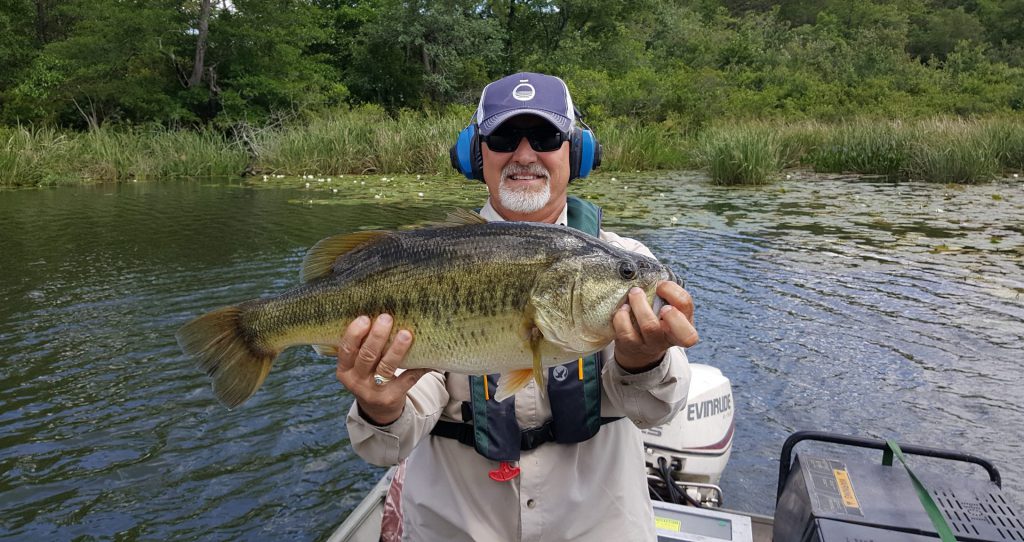
Toxic algae have a tendency to accumulate as a paint-like scum on the surface of a waterbody. Once they start forming noticeable surface scums, cyanobacteria are easier to identify through visual observations, but, in many cases, are well beyond an acceptable threshold. If water quality testing determines cyanobacteria surpass an acceptable threshold, your existing program will need a tailored solution to ensure the blue-green algae is properly managed.
Steps Towards a Productive a Trophy Fishery
Additionally, other steps can be taken to maximize productivity. For instance, lake and pond owners can switch to a low-phosphorus fish feed to reduce excess phosphorus from entering a waterbody, which can help maintain the desirable nitrogen to phosphorus ratio needed by beneficial green algae to properly compete with cyanobacteria. Ask your fisheries biologist about creating a fertilizing and feeding strategy that considers the unique water quality parameters, goals and budget for your waterbody, as well as other sustainable strategies to improve the health and longevity of your waterbody.
Adopting advancements in science by fertilizing with a better-defined purpose is key to creating a safe environment for your loved ones while also achieving a thriving trophy fishery. Once a healthy and productive environment has been cultivated, it is time to consider other management tasks, such as stocking. Lakes and ponds that are managed for the appropriate algae species gain synergy from the introduction of desirable forage fish, which can evoke impactful changes in an aquatic ecosystem. Forage species may vary depending on region and local jurisdiction, but all fisheries can benefit from thriving forage populations such as Bluegill, Fathead Minnows, Redear Sunfish and Threadfin Shad this spring. Creating a trophy fishery is not always easy, but with the proper ecosystem preparation, fish stocking strategies, and proactive management, it is possible to cultivate a productive fishery that achieves your long-term goals while meeting your budget. Need help getting started? Contact a fisheries biologist for recommendations for your unique property.
Contact Us to Build Your Lake Management Plan
Call us at 888-480-5253 or complete the form below to connect with an aquatic management expert.
SOLitude Lake Management is a nationwide environmental firm committed to providing sustainable solutions that improve water quality, enhance beauty and preserve natural resources.
SOLitude’s team of aquatic scientists specializes in the development and execution of customized lake, stormwater pond, wetland and fisheries management programs. Services include water quality testing and restoration, algae and aquatic weed control, installation and maintenance of fountains and aeration systems, shoreline erosion control, muck and sediment removal and invasive species management. SOLitude partners with homeowners associations, golf courses, private landowners, businesses and municipalities. SOLitude Lake Management is part of Rentokil, a leading business services company, operating across the United States, Canada and Puerto Rico.
For more information, visit SOLitude Lake Management at solitudelakemanagement.com, and connect on Facebook, LinkedIn and Twitter.

